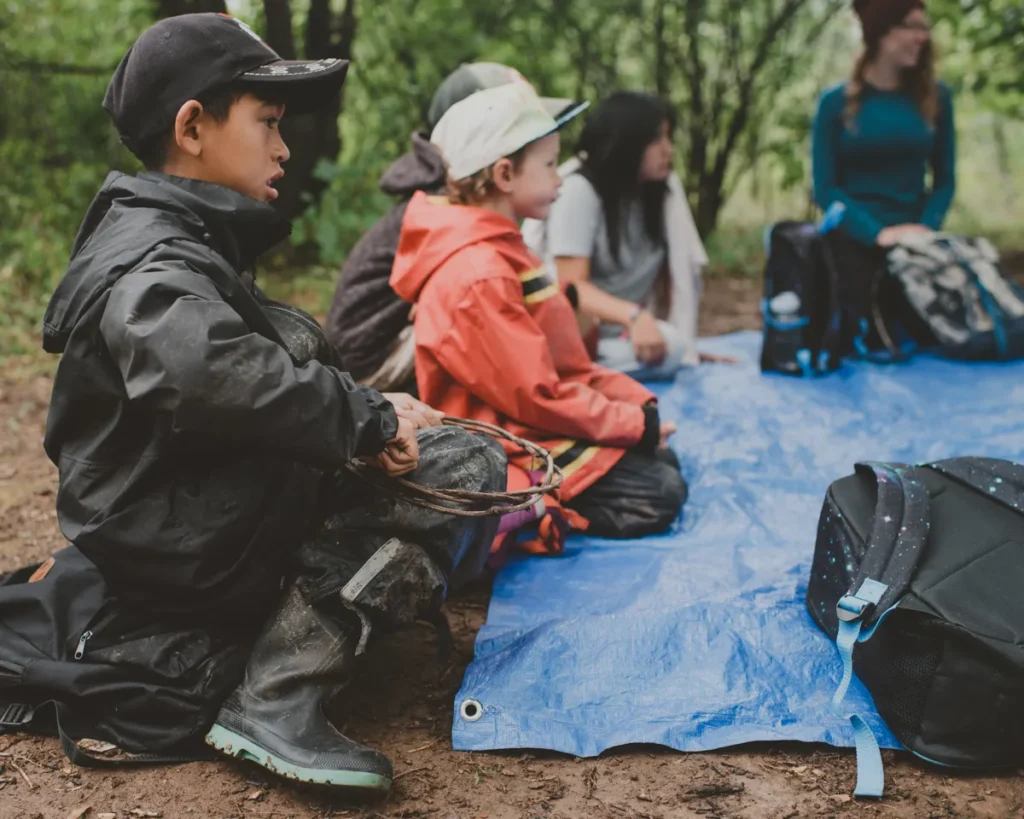
As educators who are committed to a child-centred and emergent pedagogy, we are constantly challenging ourselves to find a balance between stepping back and trusting in the learning inherent in play, versus stepping in and adding a provocation.
Our own foray into offering project-based learning at Out to Play has been a learning experience for all of us, children and adults alike, and has been immensely validating and educational. We began without knowing how these projects would work out, or if we could be successful at both project-based outcomes and staying true to the child-centred and inquiry-driven pedagogy. It turns out, with our students as co-conspirators, we sure can.
It began when we thoughtfully identified a need in our older Wolf groups (each comprising 16 children from 8 to 12 years of age). It was an unspoken need, but it was there, below the surface and visible to the honed eye. There was a need for more challenge, more intensity, more… something. We know these students are capable of immensely cool and interesting things when they are given a sense of purpose, a warm and responsive environment and the freedom to explore their own possibilities and limits. And so for the past two years, our oldest students have been invited to conceptualize, plan out, execute and then interpret a project for the benefit of the greater Out to Play community.
The Wolf groups have sixteen children ranging in age from 7 years old to 13 years old. In our first season offering project-based learning, myself and my co-educator brainstormed exciting projects with the Wolves. We built a long list. Many ideas were ambitious and exciting. Some felt daunting. The children voted on the various options until they narrowed it down to the students creating a new playspace for the whole school program, in a patch of forest that separates our field from the creek.

Intuitively, we knew we needed to be familiar with the land before we could make decisions. We wandered and played in that patch of forest for some weeks before deciding upon a starting place. There was an enormous moss covered tree whose trunk bent into a perfect bench/pony/train/dragon/train. We invited the students to make a plan: how could we create a useful pathway to that magical tree with minimal impact on the rest of the space?
The children drew and designed and submitted their construction paper plans. And soon they were given the tools needed to clear small brush away from the pathway and to the tree where they cleared a space large enough to hold a circle of children. It was mostly thorny, scrubby knee-high greenery. Some old vines hung and were pulled away to create huge wreaths and portals to climb through.
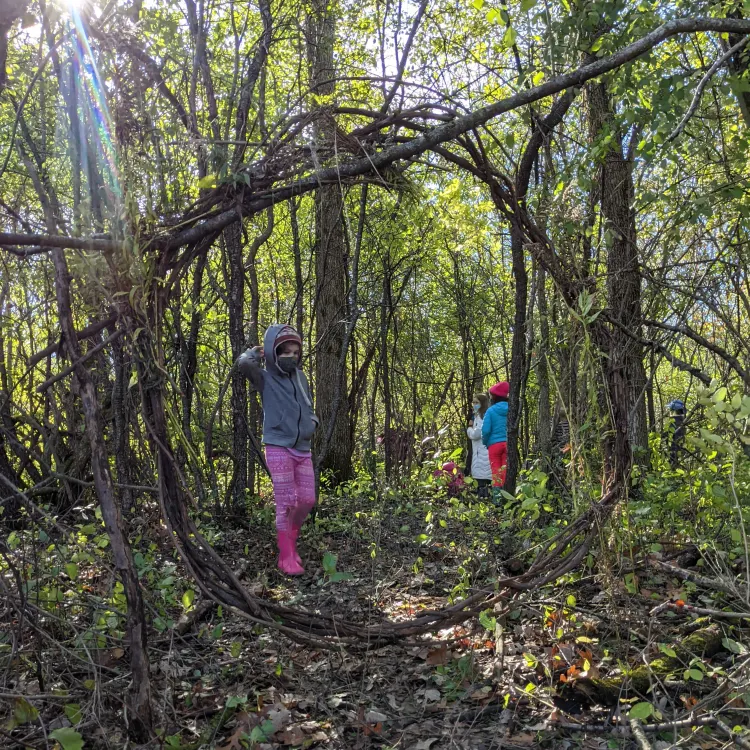
We include our students of all ages in our dynamic risk assessments, speaking aloud as we go through the potential hazards in any particular scenario and our mitigating factors. This project was an interesting opportunity to talk with our students about safe choices. “That leaning tree… do you feel we should clear under it or give it some space till it comes down?”
The experience also offered us a chance to include the children in our eco-assessment, an approach (and shared staff document) which outlines the specific ways in which our practices are designed to minimize our impacts on the land.
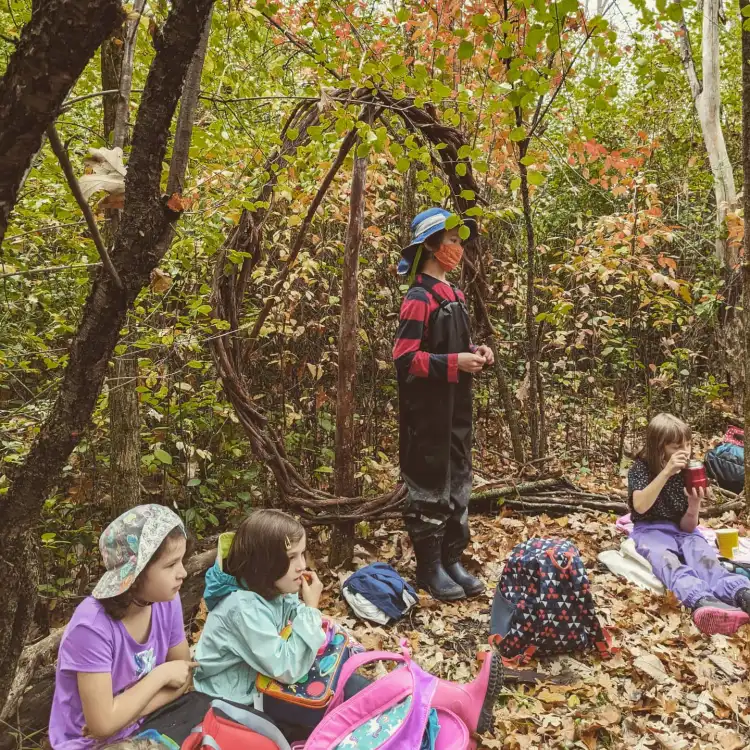
Beyond gently carving out the main trail to the tree, there was an immense amount of freedom offered to the children in how they to how we defined and manifested a “playspace.” Some students opted to expand upon a natural clearning off the pathway. They called it The Library. Some students were very interested in recreating the physical infrastructure and technology upon which the modern public library is built: “This is the checkout desk!” “This [piece of lumber with markings rendered in permanent marker] is the machine where you scan your books.”
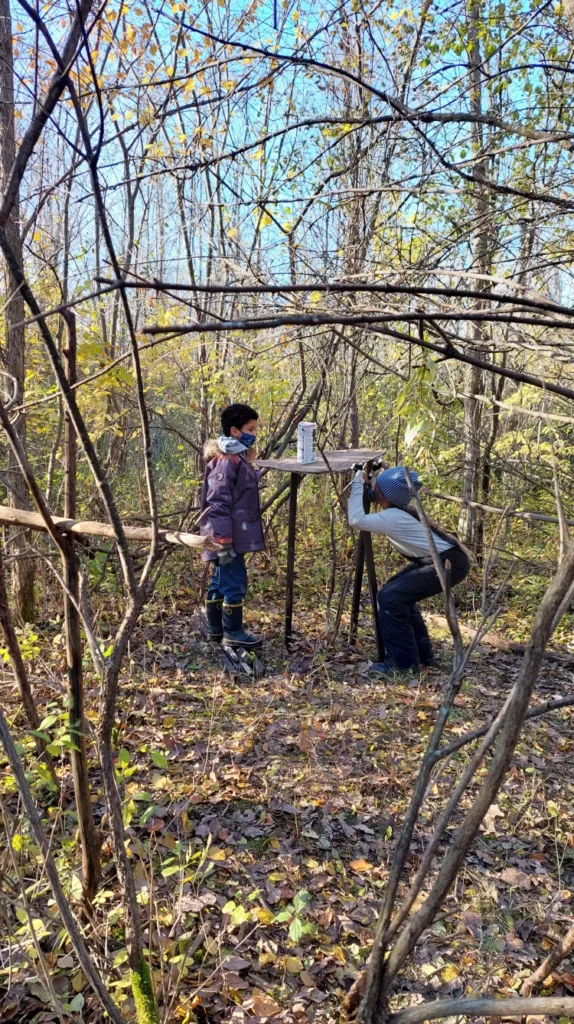
Other children focused on the idea of the library as refuge, as a place of peace and comfort. They installed burlap hammocks. For those of you who haven’t tried them, they are immensely comfortable AND can require an immense amount of troubleshooting during their initial installation. But these children were not to be dissuaded: the library visitors would have comfortable seating if it took them a hundred attempts!
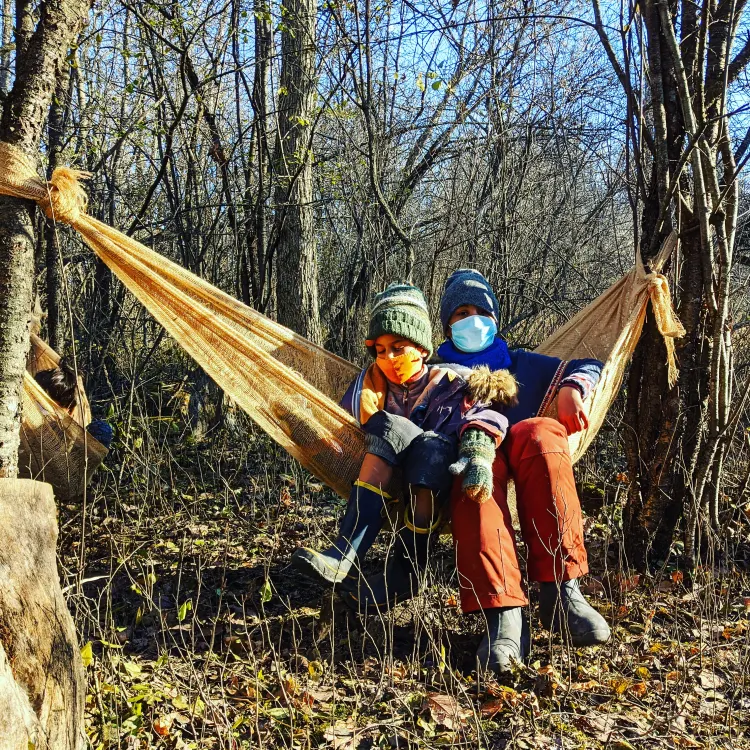
Other students created and curated the creek observation area. Total unexpected bonus, the cool L-shaped tree was close to an active beaver dam. For the sake of safety, and making it easier to maintain boundaries, it felt important to mark one specific pathway from the main play area down to the obvious draw of the water. Those Wolves who were inclined towards the challenge of tool use obligingly clipped a short pathway down to the creek. They built up a boundary on either side of that path, with piles clipped branches and fallen sticks to ensure a safe distance from the water.
Elsewhere, other children volunteered to roll stumps from the main field into the newly created circle space. There were individual projects happening alongside the more communal endeavours. One student spent hours creating a apothecary and tea shop with a curving entryway, hand-crafted vine decor, and a pretend fireplace. She was content to work at it as a solitary endeavour, and was content to offer curious or interested passerby a taste of her wares or a custom wreath.
Overall, what our Wolves achieved that Fall season was an amazing combination of artistry, imagination, physical labour, communication and collaboration. They toured their families through the space with pride. Almost a year later the space is mostly unchanged. Children of all ages play in it each week. The library now holds a large xylophone and there are more stumps in the circle. There’s a shelter covered in burlap. There’s another wooden entrance to the play space just beside the apple tree. And a small sign hangs by the beaver dam. “Thank you Beaver,” it reads.
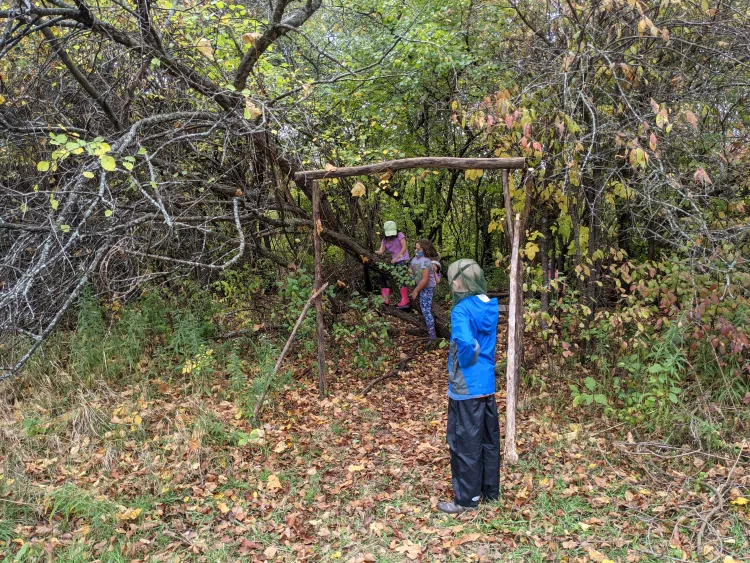
As educators we learned it was possible to frame and carry out an official “project” in a way that honoured the individual and collective interests and abilities of our group, as well as our intention to facilitate it in a way that still felt like forest school as we know and love it.
Our students were connected to each other through the space’s creation, connected with the space itself, and as we continually reminded one another, connected to everyone who would use this space in the future.
This was only the first of many project-based learning endeavours at Out to Play—since then, we’ve planted a bed of garlic, built a hugelkultur, and in the near future will be embarking on a project to bring chickens to our field (!!). There is always more learning to be had, and we are excited to be constantly growing and learning as educators, alongside such imaginative children.

